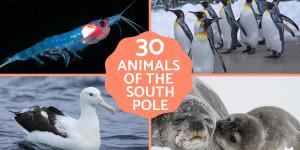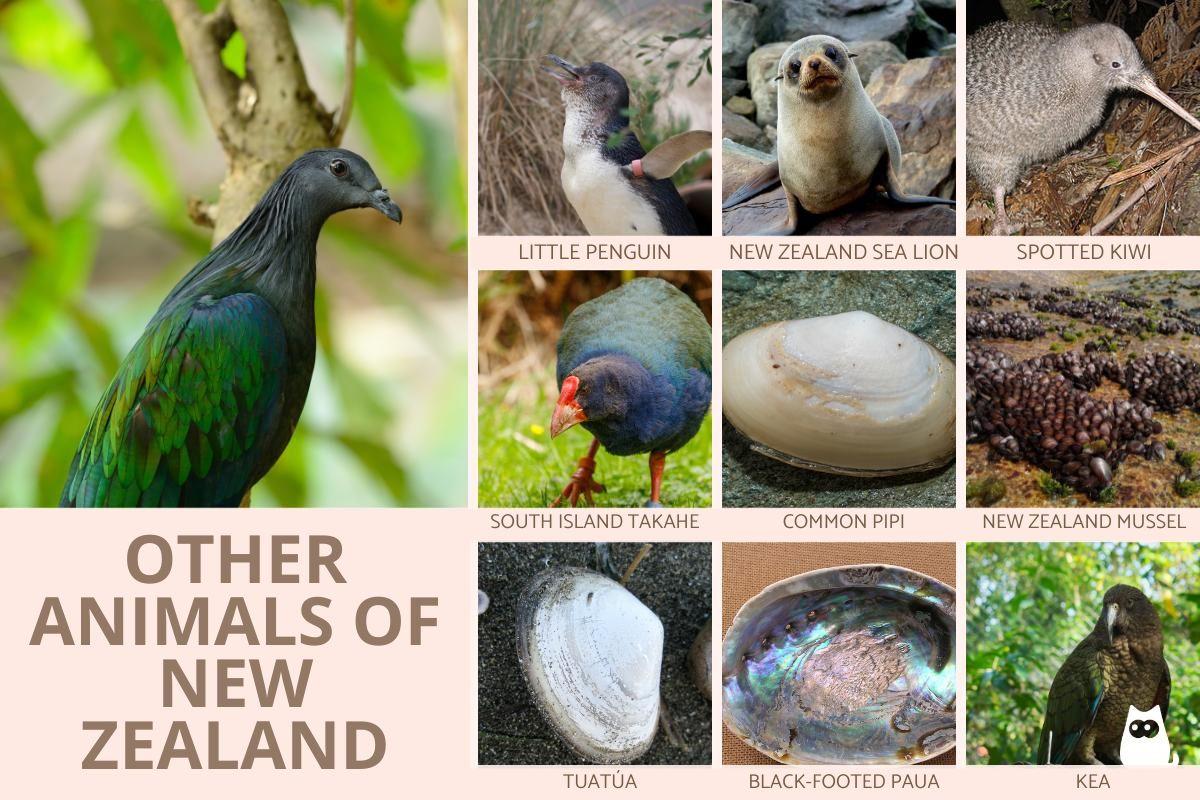What Animals Live in New Zealand?

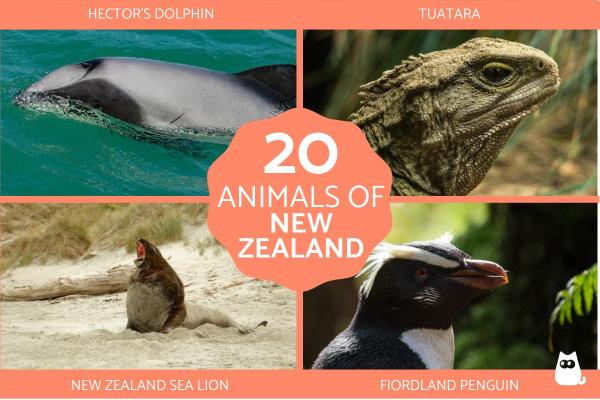
New Zealand, renowned for its stunning landscapes and unique biodiversity, is home to a remarkable array of wildlife. Isolated from the rest of the world for millions of years, this island nation has developed a distinctive ecosystem with many species found nowhere else on Earth. The country's animal life includes a range of endemic species, including birds, reptiles, and marine creatures, each adapted to the island's varied habitats.
In the following AnimalWised article, we explore 20 amazing New Zealand animals, their main characteristics and some interesting facts.
- Hector's dolphin (Cephalorhynchus hectori)
- Spotted kiwi (Apteryx haastii)
- Tuatara (Sphenodon punctatus)
- Giant weta (Deinacrida rugosa)
- Blue duck (Hymenolaimus malacorhynchos)
- New Zealand sea lion (Arctocephalus forsteri)
- Little penguin (Eudyptes pachyrhynchus)
- New Zealand mud snail (Potamopyrgus antipodarum)
- Greater short-tailed bat (Mystacina tuberculata)
- Hamilton's frog (Leiopelma hamiltoni)
- Other animals of New Zealand
Hector's dolphin (Cephalorhynchus hectori)
Hector's dolphin is a small cetacean found exclusively in the waters around New Zealand. Classified within the Cephalorhynchus genus, it is further divided into two subspecies: the more common Hector's dolphin (Cephalorhynchus hectori hectori) and the critically endangered Māui dolphin (Cephalorhynchus hectori maui).
Hector's dolphins have the most restricted distribution of all cetaceans, found primarily around the South Island and the west coast of the North Island.
These dolphins are the smallest cetaceans in the world, with a weight range between 50 to 60 kg (110 to 132 lbs) and an average length of 1.36 m (4.46 ft), with females being larger than males.
Sadly, Hector's dolphins are classified as Endangered by the IUCN, primarily due to accidental entanglement in fishing nets.

Spotted kiwi (Apteryx haastii)
The spotted kiwi (Apteryx haastii), also known as the great spotted kiwi, is one of five species within this genus of flightless birds endemic to New Zealand.
The species exhibits high levels of genetic and morphological variability. It is restricted to the South Island of New Zealand and, with the advent of human settlement, has seen its range significantly reduced. The spotted kiwi primarily inhabits highland forested areas. These flightless birds have powerful legs and sharp claws they use for digging burrows and defending themselves.
This bird measures between 45 to 65 cm (18 to 26 inches) in length and weighs between 2.4 to 3.3 kg (5.3 to 7.3 lbs). Its coloration is a blend of soft gray, brown, and whitish feathers. Unlike most birds, kiwis have their nostrils right at the end of their long, pointed beaks, making them excellent sniffers.
The species is classified as Vulnerable due to the pressure exerted by introduced predators.
For a deeper dive into the plight of New Zealand's iconic species, check out what’s causing the decline of these remarkable birds.
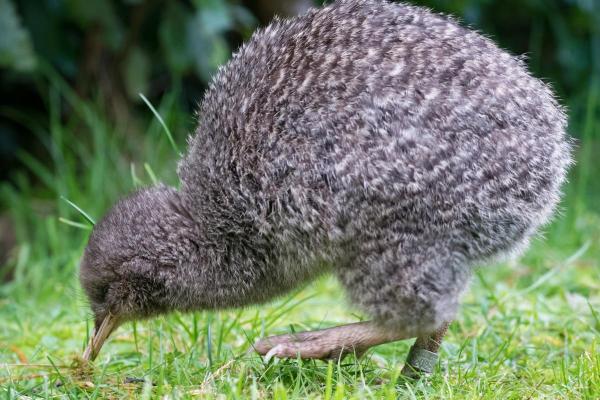
Tuatara (Sphenodon punctatus)
The tuatara (Sphenodon punctatus) is the only living species of its genus. Although it resembles lizards, it belongs to a distinct lineage within the reptile group. Tuataras are often called "living fossils" as they are the sole survivors of an ancient reptile group that thrived millions of years ago.
This unique species is endemic to New Zealand and typically inhabits areas surrounded by cliffs and vegetation that is resistant to salinity and winds. These reptiles are known for their incredible lifespan.Some tuataras have been recorded to live over 100 years.
Tuatara color varies between gray, olive, or reddish. They range in size from 40 to 60 cm (16 to 24 inches) and weigh between 0.40 kg to 1 kg (0.88 to 2.2 lbs).
Despite being classified as Least Concern, tuatara have faced threats such as the introduction of rats and habitat alteration.
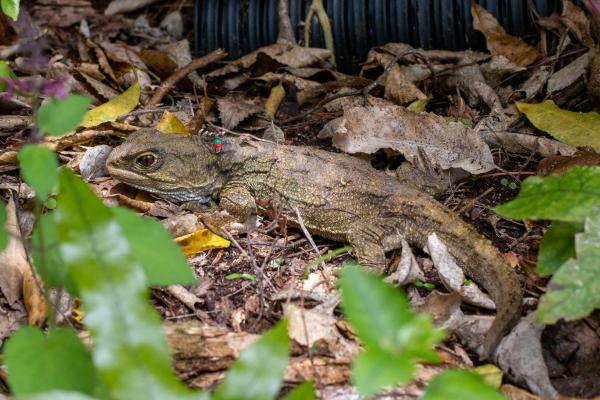
Giant weta (Deinacrida rugosa)
The giant weta (Deinacrida rugosa) is a unique insect endemic to New Zealand. Among several species of these rare insects, the giant weta stands out for its size, being one of the largest in the world. It can measure up to 7 cm (2.8 inches) and has a yellowish-brown coloration with both light and dark tones.
Lacking wings, the giant weta is equipped with a series of protective plates. Their tough exoskeleton provides excellent protection against predators. It inhabits bushes, grasslands, and forest edges.
According to the IUCN, this New Zealand insect is classified as Vulnerable. Unfortunately, like many native New Zealand species, it faces threats due to habitat loss and predation by introduced species.

Blue duck (Hymenolaimus malacorhynchos)
The blue duck (Hymenolaimus malacorhynchos) is another of New Zealand's native animals. Unlike most ducks, the blue duck has a distinctive slate-blue plumage, giving it its name. These ducks are carnivorous, primarily feeding on insects found in the riverbed.
These ducks inhabit rivers and streams in forested mountain ranges, requiring high-quality water. They have a distinctive bluish-gray coloration with brown tones on their chest and a light pink beak. On average, they measure about 53 cm (21 inches) in length and weigh between 800 to 1,000 grams (1.8 to 2.2 lbs).
Once widely distributed, its population has significantly decreased with the arrival of humans, and it is now classified as Endangered by the IUCN.

New Zealand sea lion (Arctocephalus forsteri)
The New Zealand sea lion (Phocarctos hookeri) is a marine mammal native to the Southern Islands of New Zealand and the Macquarie Islands in Australia. Despite being a marine species, its range is restricted to subantarctic islands and nearby waters. These intelligent animals have been observed using tools, such as rocks, to assist in hunting.
These sea lions weigh between 100 to 400 kg (220 to 880 lbs) and range in size from 1.6 to 3.5 m (5.2 to 11.5 ft). In these New Zealand animals, males are larger and dark brown, while females are much smaller and lighter in color. Male sea lions are fiercely protective of their territories and pups, often engaging in impressive displays of dominance.
Extensive hunting in the past, current habitat modification by the fishing industry, and deaths due to entanglement in fishing nets have led to the species being classified as Endangered.

Little penguin (Eudyptes pachyrhynchus)
The Fiordland penguin (Eudyptes pachyrhynchus) is native to New Zealand, where it breeds, and it has a non-breeding presence in Australia. Unlike many penguin species, Fiordland penguins are adapted to a mountainous environment, often nesting in high-altitude forests. Both male and female Fiordland penguins share incubation duties and chick-rearing responsibilities.
This New Zealand animal has an average size of 55 cm (21.7 inches) and weighs between 2 to 5 kg (4.4 to 11 lbs). The Fiordland penguin is easily recognizable by its distinctive yellow crest, which stands out against its black and white plumage.
Introduced predators, competition with the fishing industry, and entanglements in nets are the main threats, resulting in its classification as Near Threatened.
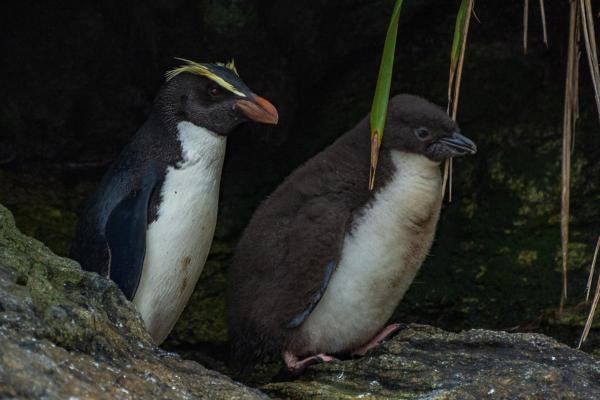
New Zealand mud snail (Potamopyrgus antipodarum)
The New Zealand mud snail (Potamopyrgus antipodarum) is a type of mollusk endemic to New Zealand, though it has been introduced and become an invasive species in other parts of the world, including Australia, Europe, and America. They can easily be transported to new locations on the feet of wading birds, fishing gear, or aquatic plants.
In its native habitat, this snail lives in lakes, streams, and brackish waters, but outside of New Zealand, it can thrive in various ecosystems, including marine environments. The snail's ability to clog water intake pipes can cause problems for industries reliant on clean water.
The New Zealand mud snail is gray or brown in color and measures between 4 to 12 mm (0.16 to 0.47 inches).
It is classified as Least Concern.
Did you know some of New Zealand’s wildlife can be quite dangerous? Find out which animals to watch out for in our related article.

Greater short-tailed bat (Mystacina tuberculata)
The greater short-tailed bat identified as Mystacina tuberculata weighs about 23.5 grams and measures between 6 to 8 cm, making it a small species. While primarily insectivorous, they also consume nectar, pollen, and fruit, making them important pollinators.
Its upper body is grayish-brown, while its underside is lighter. It inhabits temperate forests with large trees, which are crucial for its survival. Interestingly, these bats use their teeth to create burrows in trees for roosting.
The species is classified as Vulnerable due to threats such as logging, predation by introduced animals, and poisoning from chemicals used to control invertebrates.

Hamilton's frog (Leiopelma hamiltoni)
Hamilton's frog (Leiopelma hamiltoni) is an amphibian endemic to New Zealand, with a restricted habitat that was originally a rocky bank but has since been reforested. As one of only three surviving members of the Leiopelmatidae family, Hamilton's frog is a remarkable example of evolutionary history.
This small species measures between 37 to 47 mm (1.5 to 1.9 inches) and is brown in color with a dark stripe running across its head, including its eyes. Unlike most frogs, Hamilton's frog lacks a vocal sac and is unable to croak, adding to its mysterious nature.
It is classified as Vulnerable due to threats from introduced animals and deforestation. To escape the pressures of the mainland, these frogs have found refuge on offshore islands, where they face fewer threats.
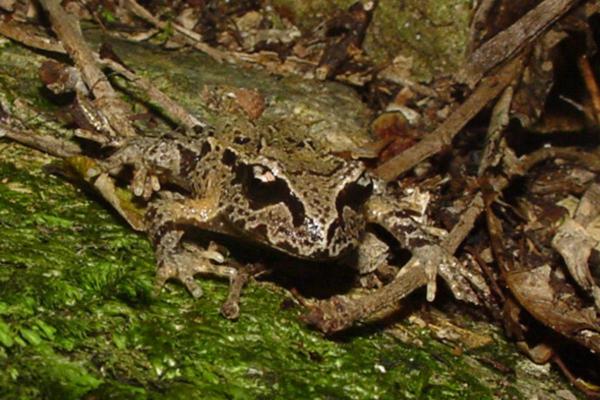
Other animals of New Zealand
The animal diversity of New Zealand is extensive and includes many fascinating species beyond those previously mentioned. Here are additional examples of wildlife found in the region:
- Northland fanged weta (Deinacrida heteracantha)
- Little penguin (Eudyptula minor)
- New Zealand fur seal (Arctocephalus forsteri)
- Lesser spotted kiwi (Apteryx owenii)
- South Island takahe (Porphyrio hochstetteri)
- Pipi (Paphies australis)
- New Zealand mussel (Perna canaliculus)
- Tuatúa (Paphies subtriangulata)
- Black-footed paua (Haliotis iris)
- Kea (Nestor notabilis)
Did you know New Zealand is home to a wide range of bird species? Learn more about these incredible feathered friends in our related article.
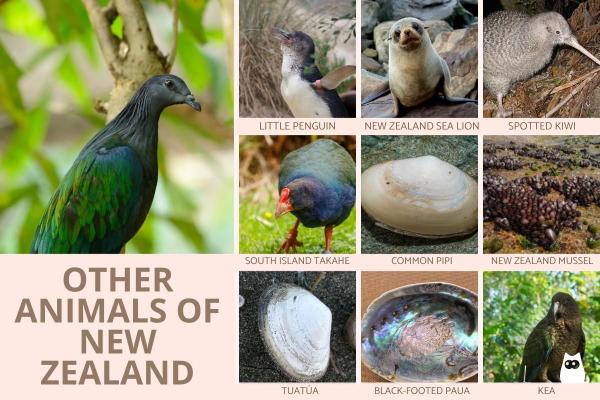
If you want to read similar articles to What Animals Live in New Zealand?, we recommend you visit our Facts about the animal kingdom category.
- Animal Diversity Web. (2023). Available at: https://animaldiversity.org/
- IUCN. (2020). The IUCN Red List of Threatened Species . Version 2020-2. www.iucnredlist.org.


